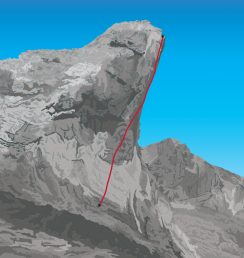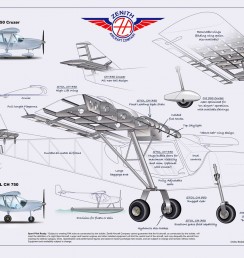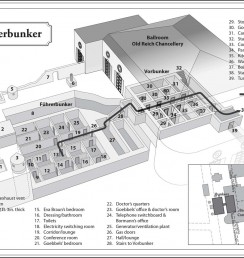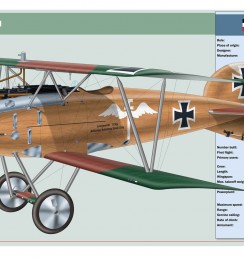Petrojarl Foinaven
A floating production storage and offloading (FPSO) unit is a floating vessel used by the offshore oil and gas industry for the production and processing of hydrocarbons, and for the storage of oil. An FPSO vessel is designed to receive hydrocarbons produced by itself or from nearby platforms or subsea template, process them, and store oil until it can be offloaded onto a tanker or, less frequently, transported through a pipeline.
The Foinaven field is located roughly 120 miles west of Shetland, in waters too deep for a conventional platform. The ship started life as a Soviet submarine tender but underwent an extensive rebuild to serve as an FPSO. Her length was increased to 252 metres by joining the existing bow and stern to a new 142 metre long centre section.
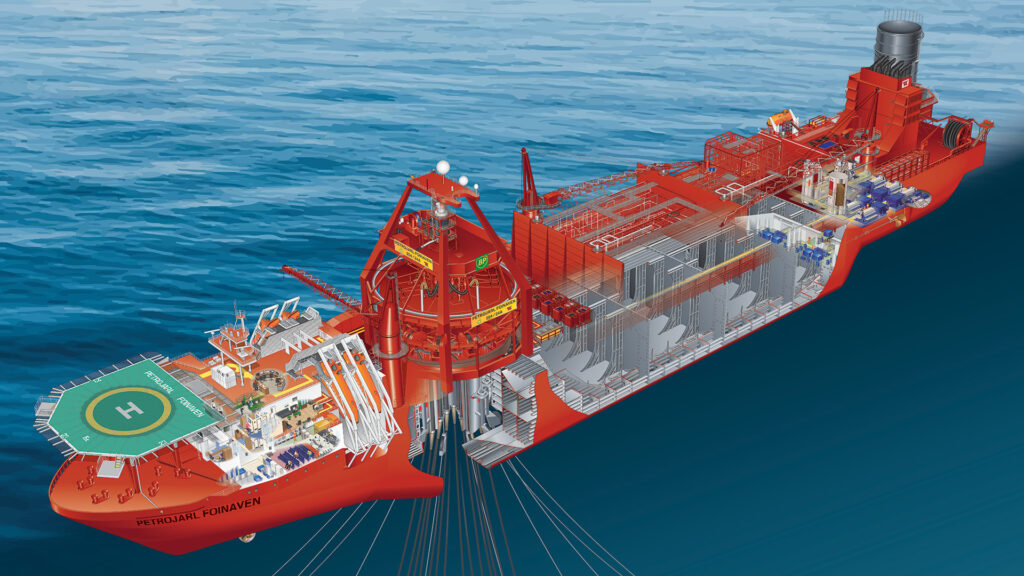
Cutaway illustration commissioned by Transmission AS of Oslo.
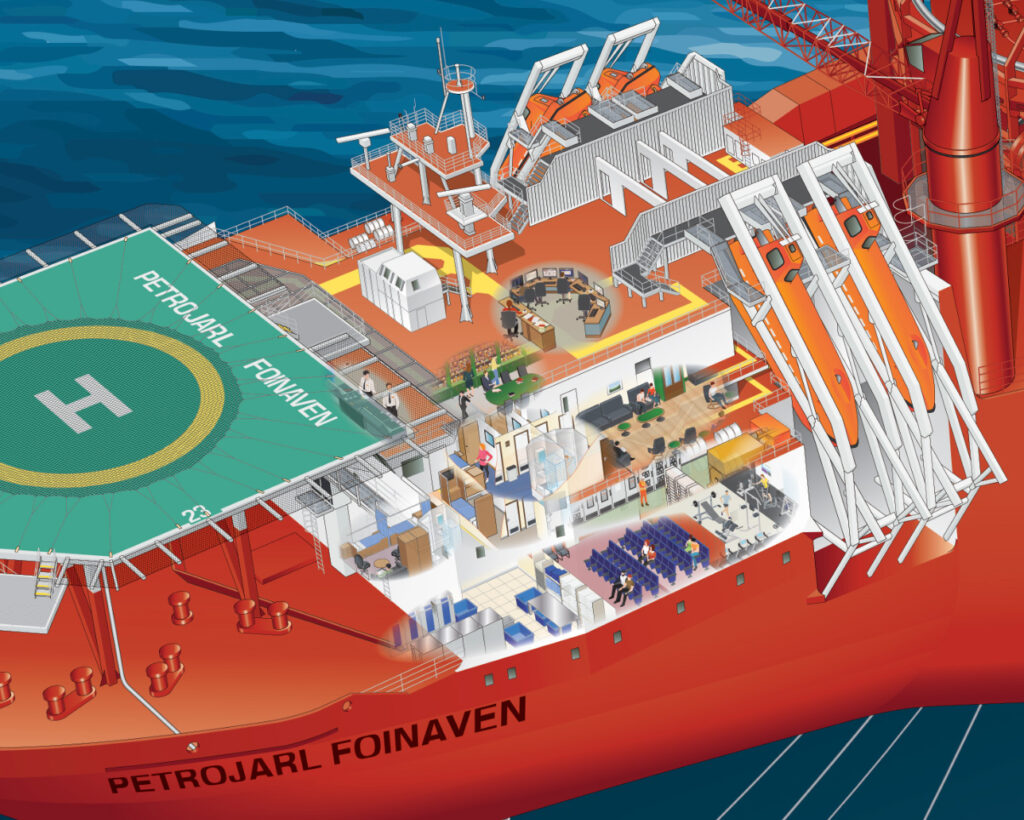
The fo’c’s’le contains crew accommodation including a gym, library, cinema, smoking and non-smoking recreation facilities. The uppermost deck houses the bridge and production offices and four free-fall lifeboats provide the principal emergency escape route.
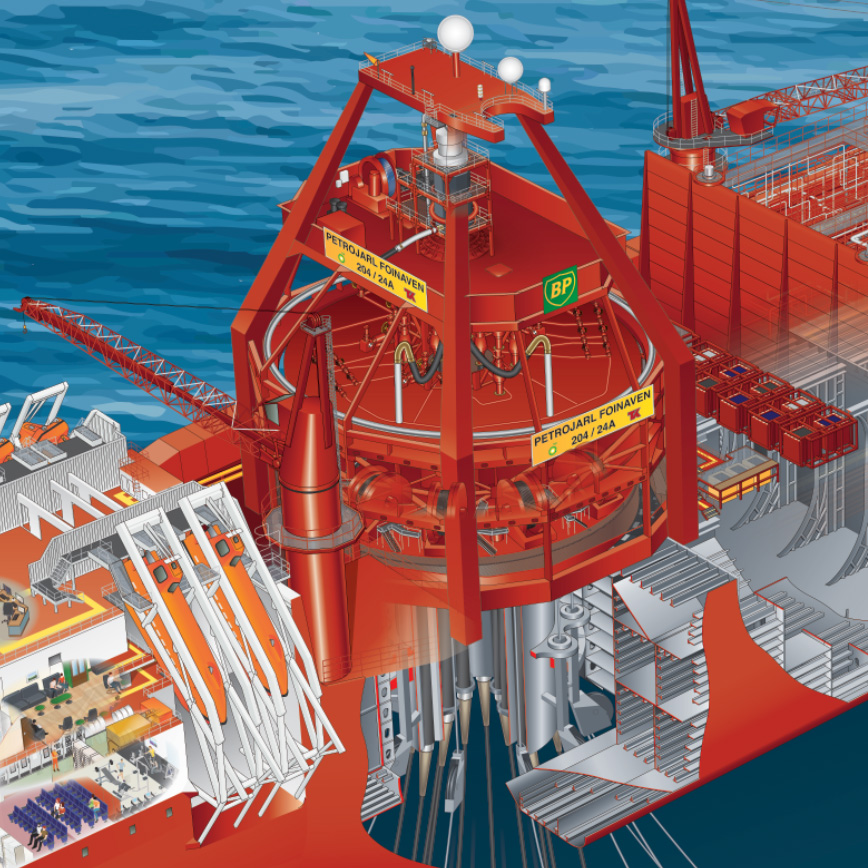
The turret is moored to the seabed by ten mooring lines and 35 tonne Vryhof anchors, the ship having 360º weathervaning. Up to fifteen 10-inch flexible risers can be accommodated.
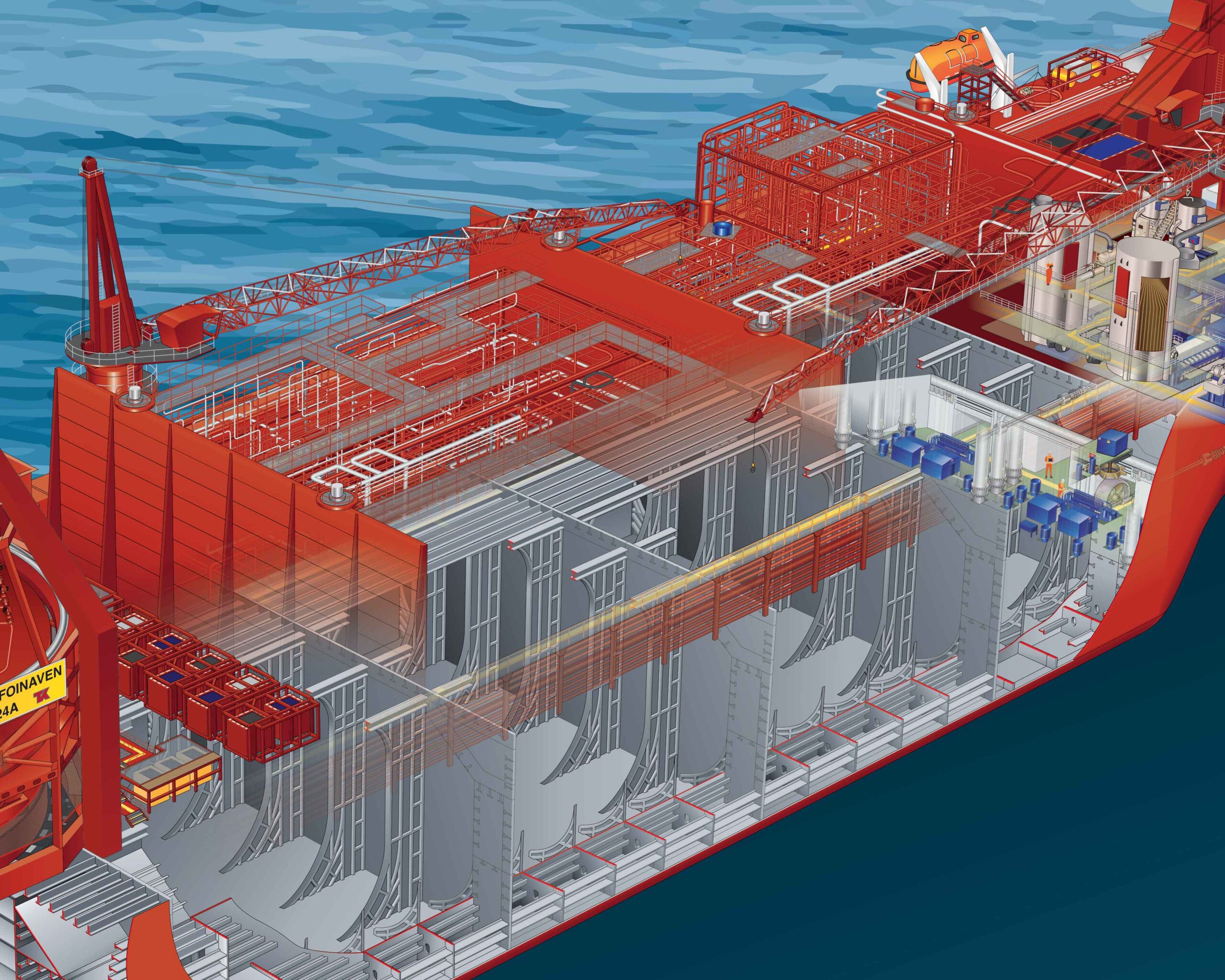
The new mid-section is of double skin construction, weighs 14,592 tonnes and has a storage capacity of 260,000 barrels of crude in five tanks. A further 4,000 tonnes of pre-assembled processing equipment was added topsides.
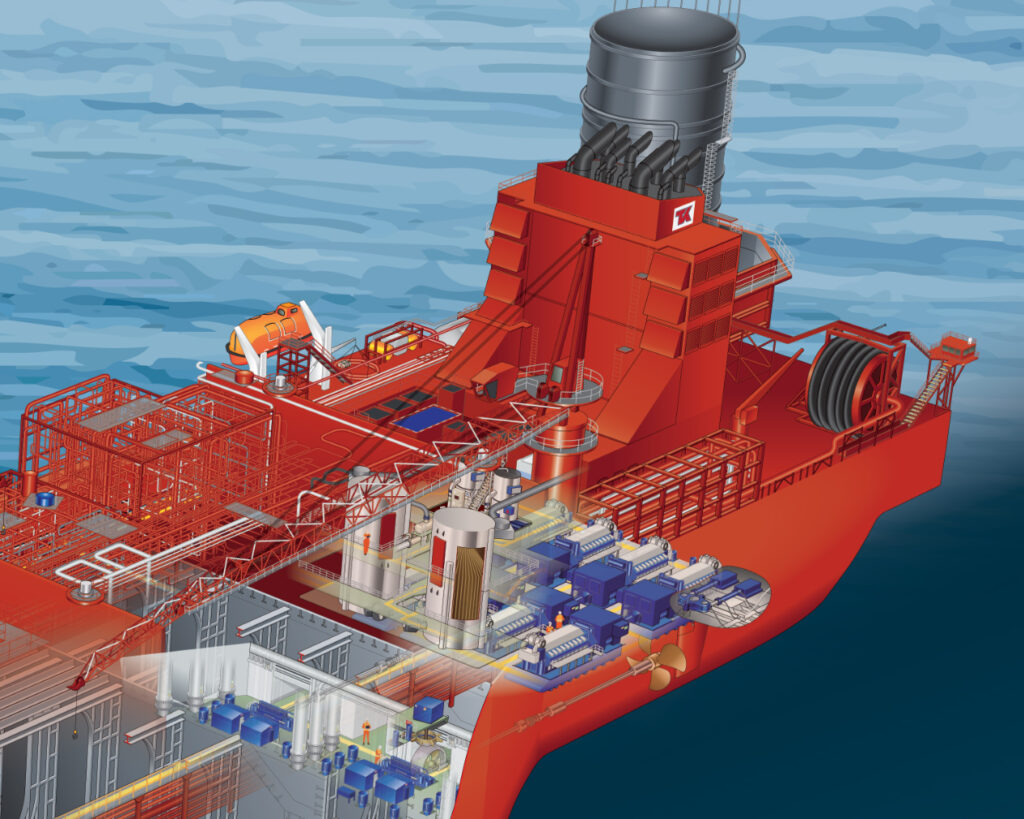
The 3.4 x 106 cu m/d flare and the 5,000 cu m/d crude offloading facility are installed on the poop deck, with power and propulsion plant housed below this deck. Eight 6.5MW, dual-fuel Wartsila 32 diesel engines provide a total output of 52MW.
In April 2021, BP suspended production from the Foinaven fields as the long-serving FPSO Petrojarl Foinaven through which the fields were producing oil is nearing the end of its 25-year design life, and will be removed from site. The FPSO was commissioned in 1996 and has been on location in the Foinaven area since 1997.According to BP, work had been underway to consider options to extend the life of the vessel out to 2025. BP concluded that, due to its age and the demands of operating west of Shetland, even with material further investment the Petrojarl Foinaven was not the right vehicle to recover the remaining resources from the Foinaven fields. BP and field partners have begun evaluating options to develop the estimated remaining resources of up to a possible 200 million barrels from the Foinaven field and surrounding area.

